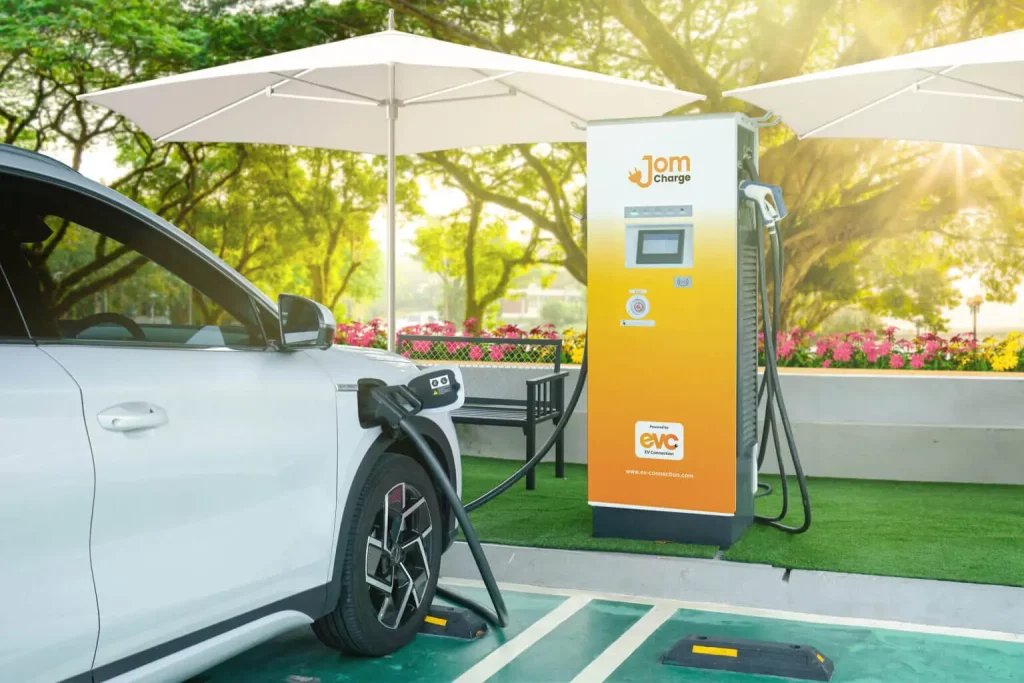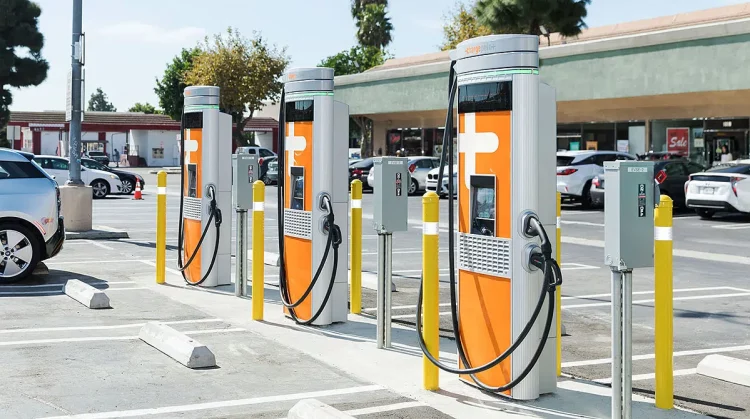As electric vehicles (EVs) become more popular, one of the most pressing challenges is the insufficient charging infrastructure. While EV adoption continues to surge, the number of charging stations—especially fast chargers—has not grown at the same pace, leading to potential range anxiety and inconvenience for EV owners.
In many regions, especially in rural areas and developing markets, the lack of charging stations makes owning an electric vehicle seem impractical for many consumers. Furthermore, in densely populated urban areas, charging stations are often overcrowded, resulting in longer wait times and a frustrating user experience. The question is: Can innovative solutions break this charging infrastructure bottleneck? And what will the future of EV charging look like as technology evolves?
This article explores the current challenges of EV charging infrastructure, the innovative solutions emerging to address them, and the potential transformations in the charging experience that may make owning an EV even more convenient in the near future.
1. The Charging Infrastructure Gap: A Global Challenge
Despite the increasing popularity of electric vehicles, charging infrastructure still lags behind demand in many parts of the world. The problem is multifaceted and includes the following issues:
1.1 Insufficient Charging Stations
- In urban areas, charging stations are often too few, and in rural or suburban areas, they may be nonexistent. This lack of infrastructure creates a significant barrier to potential EV buyers who fear they won’t have access to a nearby charger.
- According to the International Energy Agency (IEA), the number of global EV charging points must increase tenfold by 2030 to meet the demand created by growing EV adoption.
1.2 Slow Charging Times
- The majority of public charging stations are Level 2 chargers, which charge at a relatively slow rate, typically taking 4 to 8 hours for a full charge. While these chargers work well for overnight charging, they are impractical for drivers who need a quick turnaround during the day.
- Level 3 (DC fast chargers) are much faster, but their high cost and limited availability in many regions make them less widespread, leading to long wait times at those stations.
1.3 Overcrowding at Charging Stations
- As the number of EVs increases, existing charging stations often become overwhelmed. In some cases, consumers face long wait times to charge, which can detract from the convenience of owning an EV. This is especially true in high-demand areas like metropolitan cities and along popular highway routes.
1.4 Home Charging Limitations
- Home charging is ideal for many EV owners, but it isn’t always an option. Renters, those living in apartments, or individuals in older buildings with outdated electrical infrastructure may not be able to install home chargers.
- Even for homeowners with access to home charging, the cost of upgrading home electricity systems for higher-capacity charging can be an obstacle.
2. Innovative Solutions to Overcome Charging Infrastructure Deficits
To overcome these infrastructure challenges, the industry is exploring a range of innovative solutions that could revolutionize the EV charging experience. These innovations range from new types of chargers to smart charging networks that better integrate with urban infrastructure.
2.1 Ultra-Fast Charging Technology: Reducing Charge Time
One of the most exciting developments is the improvement of ultra-fast charging technology. As manufacturers develop 500 kW+ charging stations, EVs could be charged in as little as 15 minutes—comparable to the time it takes to fill a gas tank. This would eliminate one of the primary frustrations of EV ownership: the lengthy charge time.
- Tesla’s Supercharger V3, for example, charges at 250 kW and can deliver up to 75 miles of range in just 5 minutes. There are also emerging partnerships in the industry working toward even faster charging technologies, including 800V systems, which could cut charging time significantly.
2.2 Wireless (Inductive) Charging: Charging Without Cables
Another innovation that could transform the EV charging landscape is wireless charging, also known as inductive charging. This technology uses electromagnetic fields to transfer energy from a charging pad to the vehicle’s battery, eliminating the need for physical plugs.
- This could potentially make charging a more seamless experience, as vehicles could simply park over a charging pad, whether at home or in a public location. It would also enable automatic charging when the vehicle is parked for an extended period, like overnight or in a parking garage.
- Wireless charging could be integrated into smart cities with in-road charging, allowing vehicles to charge while driving on certain highways or city streets, further reducing the need for static charging stations.
2.3 Battery Swap Stations: Quick Replacements Instead of Charging
Another promising solution to overcome charging bottlenecks is the concept of battery swapping stations. Instead of waiting for an EV to charge, drivers could pull into a station, have their depleted battery swapped with a fully charged one, and continue their journey in minutes.
- While this solution is not yet widespread, Nio, a Chinese electric vehicle manufacturer, has already rolled out battery-swapping stations in some regions. The technology could eventually be adopted by other automakers, offering a quick and convenient alternative to traditional charging.
- One potential barrier is standardization: for battery swapping to become feasible, automakers must adopt common standards for battery sizes and designs, which may take time and industry coordination.
2.4 Mobile Charging Solutions: Charging Anywhere
To make charging even more accessible, mobile charging units are being developed. These are essentially portable charging stations that can be dispatched to wherever they are needed.
- Companies like Volta and ChargePoint are experimenting with bringing mobile charging vans directly to consumers who are stranded with low battery levels or who need to top up on the go. These mobile stations can meet drivers where they are, reducing the need to find a charging station in the first place.
2.5 Smart Charging Networks: Optimizing Charging Locations and Times
As the demand for charging increases, smart charging networks will become essential. These systems will help optimize charging station availability, direct users to less crowded stations, and reduce grid strain by scheduling charging during off-peak hours.
- Vehicle-to-grid (V2G) technology could also play a role in this optimization. By enabling EVs to communicate with the grid, owners could schedule their charging to take advantage of renewable energy sources, further improving the sustainability of the charging process.
- Blockchain and AI-based algorithms are also being explored to improve the pricing and availability of charging stations. For example, drivers could pre-book charging spots and receive real-time updates on charger availability through a dedicated app.

3. Future Charging Experience: A Seamless, Connected, and Fast Process
As these innovative charging solutions continue to emerge, the overall EV charging experience will evolve dramatically in the coming years. Here’s what the future might look like:
3.1 Seamless Integration with Urban Infrastructure
As smart cities develop, EV charging stations will be seamlessly integrated with urban infrastructure. Charging stations could be strategically located at key points throughout the city, including parking lots, shopping centers, and office buildings. Dynamic pricing could encourage users to charge during off-peak hours, reducing congestion at stations during peak demand periods.
3.2 On-the-Go Charging
The concept of charging on the go could become a reality with dynamic road charging systems. In the future, EVs might drive on highways or city streets that feature embedded charging coils, allowing for continuous charging while in motion. This would dramatically reduce the need for stationary charging stops and eliminate many concerns about range anxiety altogether.
3.3 Ultra-Fast, Flexible Charging Stations
The next generation of charging stations will be more flexible and adaptive to the needs of drivers. Fast-charging networks that offer 500 kW+ speeds, along with multi-vehicle fast-charging lanes, will become more common. Charging stations may also feature features like solar canopies, which use renewable energy to power the chargers and further reduce emissions.
3.4 User-Centric Charging Solutions
As the charging experience evolves, the user interface will become more intuitive and personalized. Drivers will be able to reserve spots, precondition their vehicle’s battery, and track real-time charging progress on their smartphones. Charging will no longer feel like a burden but rather an integral part of the EV ownership experience.
4. Conclusion: A Brighter, More Efficient Future for EV Charging
The challenges posed by insufficient charging infrastructure are significant, but with the ongoing innovations in charging technology, there is a clear path toward breaking down these barriers. Ultra-fast charging, wireless technology, battery swapping, smart networks, and mobile charging units are just some of the solutions that will improve the EV charging experience and make it as seamless as traditional refueling.
As the industry continues to evolve, the future of EV charging will be defined by speed, convenience, and accessibility. With innovative solutions on the horizon, range anxiety may soon be a thing of the past, and charging an EV could become as easy as filling up a gas tank.











































